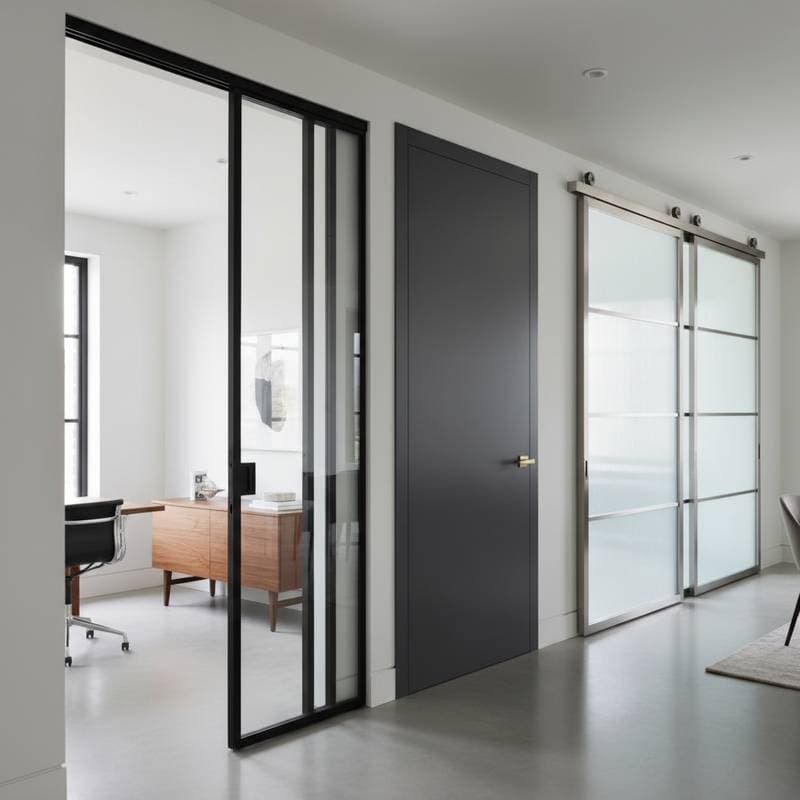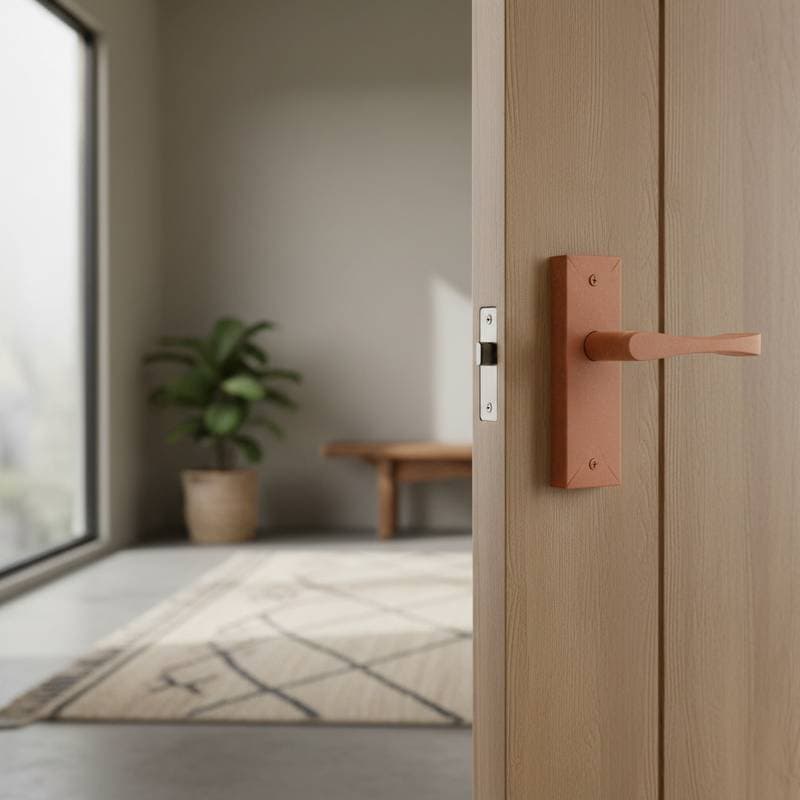Barn Door Drawbacks: Professional Alternatives for Interior Doors
Barn doors gained popularity for their rustic aesthetic and apparent space efficiency in open-concept layouts. However, many homeowners discover practical limitations that diminish their appeal over time. Professionals frequently replace these doors with options that prioritize functionality, durability, and seamless integration into daily living spaces. This guide explores common issues with barn doors and highlights expert-recommended replacements that balance style and performance.
Key Limitations of Barn Doors in Everyday Use
Barn doors excel in visual appeal but often falter in practical applications. Gaps around the edges prevent a complete seal, allowing sound, light, and odors to pass through. This proves problematic in private areas such as bedrooms, bathrooms, or home offices, where isolation is essential.
Additionally, the sliding mechanism requires significant wall space for operation. This clearance can interfere with electrical outlets, light switches, or decorative elements, complicating room layouts. In compact areas, such limitations reduce flexibility. Hardware issues compound these problems: tracks accumulate dust, rollers develop squeaks, and improper anchoring may cause sagging in heavier doors.
Expert Insights on Durability and Practicality
Contractors and designers evaluate doors based on long-term reliability rather than initial aesthetics. They assess factors like maintenance demands, repair expenses, and overall lifespan. Barn doors, despite their straightforward appearance, demand regular adjustments to maintain smooth operation.
Professionals seek solutions that ensure quiet operation, secure closure, and structural integrity. High-quality alternatives minimize disruptions and adapt to diverse interior styles, from contemporary to classic.
Superior Options for Sliding and Space-Saving Needs
Several professional alternatives address barn door shortcomings while offering varied installation possibilities. The table below compares key features to aid selection.
| Option | Initial Cost | Lifespan | Maintenance | Best Applications |
|---|---|---|---|---|
| Pocket Doors | Moderate to High | Long | Low | Compact areas requiring full seal |
| Wall-Mounted Sliders | Moderate | Medium | Moderate | Open layouts with visual division |
| Bifold Doors | Low to Moderate | Medium | Low | Narrow openings like closets |
| Hinged Doors | Low | Long | Very Low | Privacy-focused rooms |
Pocket Doors: Seamless and Efficient Choice
Pocket doors slide into the wall cavity, eliminating external track visibility and preserving floor space. They achieve a tighter seal for superior sound insulation and privacy compared to barn doors. Contractors favor them for high-use areas like bathrooms or studies.
Installation begins with a structural assessment to confirm the wall supports an internal frame without obstructing utilities. Workers then remove drywall sections, insert a pre-assembled pocket frame, and secure the track system. The door panel attaches to precision rollers for effortless gliding.
Final checks ensure even alignment and flush closure to avoid friction. Finishing involves matching trim and paint to blend with existing decor. Homeowners benefit from instructions on periodic track cleaning to sustain quiet performance. Although upfront framing increases costs, these doors deliver enduring value through reduced noise and unobstructed walls.
Enhanced Wall-Mounted Sliding Doors
For those preferring exposed tracks with refined mechanics, upgraded wall-mounted systems provide a viable upgrade. These feature reinforced rollers, soft-close mechanisms, and denser door materials that minimize gaps and operational noise. They suit modern or eclectic interiors where partial visibility enhances openness.
Professionals select these for spaces prioritizing light flow over total isolation, such as kitchen pantries or media rooms. Installation focuses on level mounting to prevent misalignment. Regular upkeep includes wiping tracks and securing fasteners every six months. With premium components, these systems maintain reliability for a decade or more.
Bifold and Hinged Doors: Reliable Fundamentals
Bifold doors fold accordion-style, ideal for confined spaces like linen closets or laundry rooms. They require minimal clearance and install quickly with basic hardware. Though less modern in profile, their simplicity ensures consistent function without frequent adjustments.
Hinged doors offer the most robust privacy and acoustics, sealing firmly against jambs. Available in solid-core woods or composites, they withstand heavy use and align effortlessly over time. Designers recommend them for bedrooms or living areas, where tranquility and security take precedence. Customization options range from flat panels to paneled designs, fitting any architectural theme.
Sustaining Door Performance Over Time
All door systems require attention to maximize longevity. Select hardware from reputable manufacturers to resist wear and corrosion. Opt for stable materials like solid hardwoods or engineered composites that resist warping in humid environments.
Protect finishes with regular dusting and avoid abrasive cleaners. In high-traffic zones, inspect components annually: lubricate hinges on swinging doors, vacuum pocket tracks, and align sliding mechanisms. These habits prevent minor issues from escalating and preserve aesthetic appeal.
Matching Doors to Your Home's Demands
Effective door selection starts with evaluating room constraints and usage. Measure clearances to determine if pocket or bifold designs fit without reconfiguration. Consider acoustics for noise-sensitive areas and light needs for semi-open divisions.
Factor in total ownership costs: initial outlay plus ongoing care. A durable hinged door might prove more economical than repeated barn door repairs. Consult professionals early to align choices with your home's structure and lifestyle.
Steps to a Successful Door Upgrade
Begin by documenting current door issues and desired improvements. Gather measurements and photos for contractor review. Choose materials that complement your interior palette.
Schedule a site visit for precise quoting and feasibility checks. During installation, oversee progress to ensure code compliance. Post-installation, test operations thoroughly and maintain as advised. This approach yields doors that enhance comfort and value for years.






